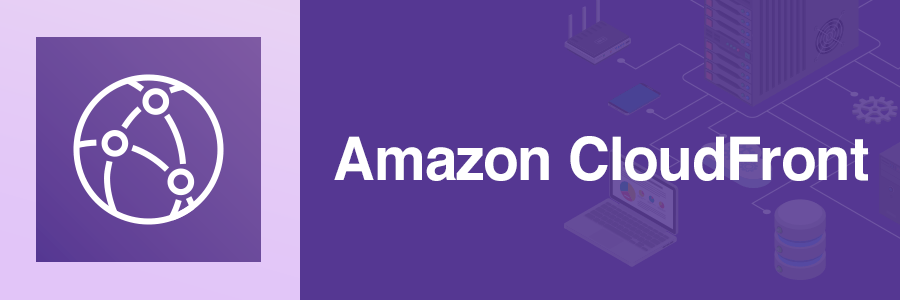大久保です。
目次
やりたいこと
CloudFrontの機能であるLambda@Edgeを使用し、S3の静的WEBページへのアクセスに対して、BASIC認証を設定しました。認証を通過したユーザごとのアクセス履歴をcloudfrontのアクセスログから確認しようと思います。
apacheであればBASIC認証を行った際のユーザをアクセスログに出力できますが、cloudfrontのアクセスログから確認には、それに該当するフィールドはないので、Cookieのフィールドで代用することにします。
【apacheのアクセスログフィールド】(抜粋)
%h
%l
%u ←当該フィールド
【cloudfrontのアクセスログフィールド】(抜粋)
date
time
x-edge-location
sc-bytes
c-ip
cs-method
cs(Host)
cs(Cookie) ←Cookieフィールド
その他条件
- BASIC認証用のリストとして、S3のcsvファイルを参照します。
- ランタイムはPythonを使用します。
やったこと
-
新規でCloudfrontディストリビューション作成・設定
【参考1】簡単だった!CloudFront + S3 に BASIC認証を入れる方法 -
BASIC認証用のコードを作成し、Lambda@Edgeに設置
【参考2】Pythonを使ったBasic認証の設定@Lambda -
S3のcsvファイルを読み取るようにコードを追加・修正
【参考3】AWS S3のCSVファイルをシンプルに読み込むPythonコード -
cookieの有無を判定するコードを追加・修正
【参考3】Lambda@Edge で wwwあり・なしをどちらか一方にリダイレクトで寄せる対処を行う
完成したコード
- 今回作成したコードは以下の通りです。
import io
import csv
import boto3
import json
import base64
userid = []
def lambda_handler(event, context):
request = event.get("Records")[0].get("cf").get("request")
headers = request.get("headers")
cookie_header = headers.get("cookie")
REDIRECT_HOST = "denet.cloudfront.net"
authorization_header = headers.get("authorization")
if check_cookie_header(cookie_header) and cookie_header[0].get("value") == userid:
return request
elif check_authorization_header(authorization_header):
return {
'status': '301',
'statusDescription': 'Moved Permanently',
'headers': {
'location': [{
'key': 'Location',
'value': f'https://{REDIRECT_HOST}'
}],
'Set-Cookie': [{
'value': userid
}]
}
}
return{
'headers': {
'www-authenticate': [
{
'key': 'WWW-Authenticate',
'value':'Basic'
}
]
},
'status': 401,
'body': 'Unauthorized'
}
def check_cookie_header(cookie_header: list) -> bool:
if not cookie_header:
return False
return True
def get_s3file(bucket_name, key):
s3 = boto3.resource('s3')
s3obj = s3.Object(bucket_name, key).get()
return io.TextIOWrapper(io.BytesIO(s3obj['Body'].read()))
def check_authorization_header(authorization_header: list) -> bool:
if not authorization_header:
return False
accounts = []
for rec in csv.DictReader(get_s3file('Authlist', 'Authlist.csv')):
users = rec["user"]
passwprd = rec["pass"]
accounts.append({"user":users,"pass":passwprd})
for account in accounts:
encoded_value = base64.b64encode("{}:{}".format(account.get("user"), account.get("pass")).encode('utf-8'))
check_value = "Basic {}".format(encoded_value.decode(encoding='utf-8'))
global authorization_value
authorization_value = authorization_header[0].get("value")
global userid
userid = account.get("user")
if authorization_value == check_value:
return True
return Falseアクセスログの確認
以下、認証用リスト(Authlist.csv)の内容です。
user,pass,
test1,1000ljhkhK
test2,2000vxbxvL
test3,3000zxbzxzcloudfrontのドメインにアクセスし、BASIC認証通過後、S3に保存されたログを確認してみます。
【cloudfrontのアクセスログ】(抜粋)
date 2021-06-01
time 06:03:56
x-edge-location NRT51-C4
sc-bytes 281
c-ip 221.243.14.xxxx
cs-method GET
cs(Host) denet.cloudfront.net
cs(Cookie) test1 ←ユーザ名を確認
おわりに
今回は、参考にした記事と完成したコードを簡単に紹介しました。
各フェーズでの設定の詳細については別記事で紹介したいと思います。
ではまた。
プロフィール
業界未経験の転職組
LINK
クラウドベリージャム:プロフィールページ
